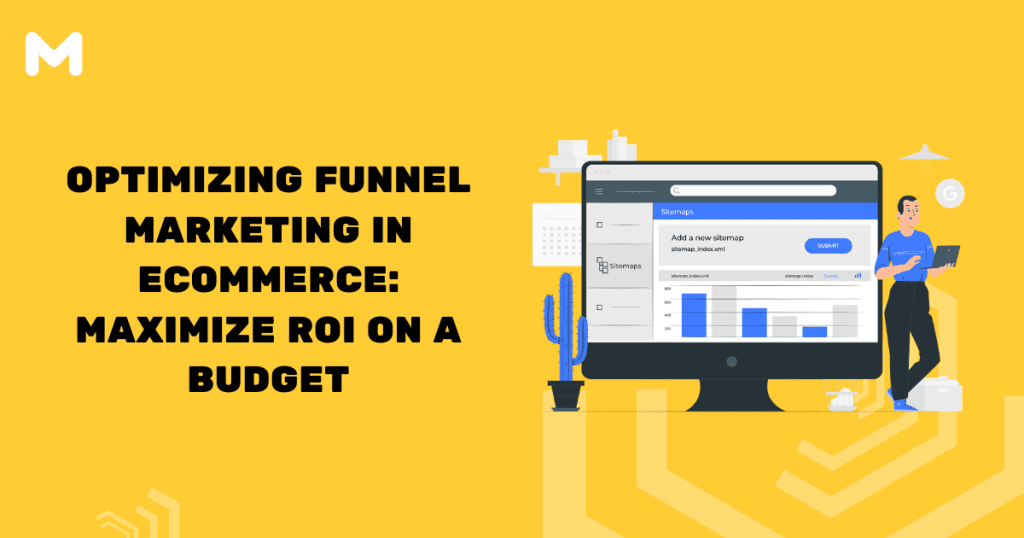In today’s competitive ecommerce landscape, businesses strive to make the most out of their marketing investments while operating within a limited budget. This is where optimizing funnel marketing comes into play. By strategically aligning your marketing efforts with the customer journey, you can maximize your return on investment (ROI) without breaking the bank. In this blog, we will explore cost-effective strategies to optimize your ecommerce sales funnel, helping you achieve better results while being mindful of your budget.
- Understanding the Ecommerce Sales Funnel
Before diving into optimization techniques, it’s crucial to understand the ecommerce sales funnel. The sales funnel is a visual representation of the customer journey, from initial awareness to making a purchase. It typically consists of four stages: awareness, interest, decision, and action.
- Awareness: Attracting potential customers to your ecommerce website through various marketing channels.
- Interest: Engaging and nurturing leads by providing valuable content and personalized experiences.
- Decision: Assisting potential customers in evaluating options and making informed purchase decisions.
- Action: Encouraging visitors to convert into paying customers through effective calls to action.
- Streamlining Funnel Marketing on a Budget
Now that we understand the ecommerce sales funnel, let’s explore cost-effective strategies to optimize each stage without compromising results: This involves leveraging tools like email marketing automation to nurture leads in the consideration stage and implementing A/B testing to refine your product pages for higher conversions. Streamlining processes such as retargeting abandoned carts or offering personalized discounts can also make a significant impact at minimal expense. By focusing on these strategies, you not only boost efficiency but also lay a solid foundation for scaling up your ecommerce business effectively and sustainably.
Awareness:
- Leverage organic search engine optimization (SEO) techniques to improve your website’s visibility in search engine results.
- Invest in content marketing, such as informative blog posts and engaging social media content, to attract and educate potential customers.
- Collaborate with influencers or complementary businesses for mutually beneficial promotions, expanding your reach without significant expenses.
Interest:
- Develop targeted email marketing campaigns to nurture leads and build relationships with potential customers.
- Utilize marketing automation tools to personalize messaging and automate customer engagement, reducing manual efforts and costs.
- Leverage social proof, such as customer reviews and testimonials, to build trust and create interest in your products or services.
Decision:
- Optimize your website’s user experience (UX) to make it easy for potential customers to compare products, read reviews, and make informed decisions.
- Implement retargeting campaigns to remind potential customers of products they have shown interest in, encouraging them to return and complete their purchase.
- Offer incentives like discounts, free shipping, or limited-time promotions to incentivize decision-making and increase conversions.
Action:
- Simplify the checkout process to minimize cart abandonment rates and improve conversion rates.
- Implement upselling and cross-selling techniques to increase the average order value without significant additional costs.
- Focus on building long-term customer relationships through personalized post-purchase follow-ups, loyalty programs, and exceptional customer service.
- Monitoring and Measuring Success
To ensure the effectiveness of your funnel marketing optimization efforts, it’s essential to monitor and measure your results. Use analytics tools to track key performance indicators (KPIs) such as website traffic, conversion rates, customer acquisition costs, and customer lifetime value. Continuously analyze and refine your strategies based on data-driven insights to further optimize your funnel.
Moving On
Optimizing your funnel marketing in ecommerce doesn’t always mean breaking the bank. By strategically aligning your efforts with the customer journey, leveraging cost-effective tactics, and continuously monitoring and refining your strategies, you can maximize your ROI on a budget. Remember, success in ecommerce requires a combination of creativity, data analysis, and adaptability. Embrace these strategies, experiment with different approaches, and fine-tune your tactics to achieve better results and drive sustainable growth for your ecommerce business without overspending.


